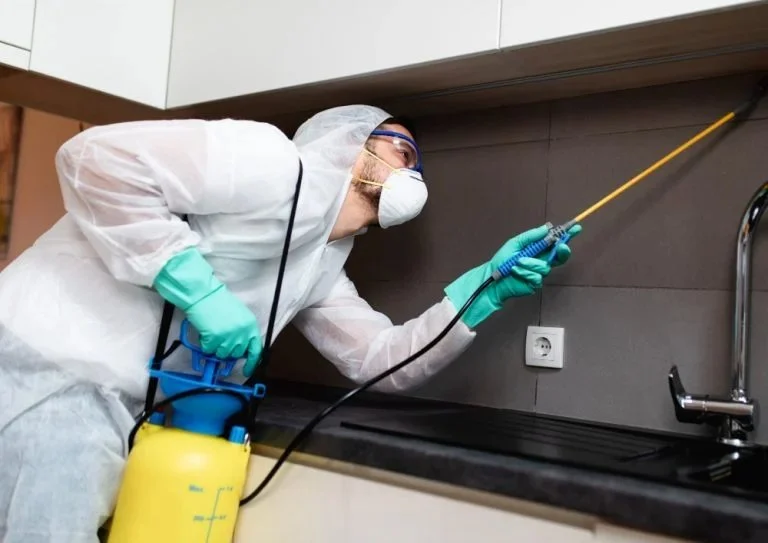
- 1. Why Crawl Spaces Are Targeted by Pests
- 2. Common Pests Found in Crawl Spaces
- 3. Steps to Control Pests in Crawl Spaces
- 4. Tools and Products for Pest Control in Crawl Spaces
- 5. Why Choose PestControlHub for Pest Solutions
1. Why Crawl Spaces Are Targeted by Pests
Crawl spaces are a common area in many homes that often go unnoticed, making them an ideal breeding ground for pests. These areas are dark, damp, and often have poor ventilation—conditions that pests love. The lack of regular human activity and maintenance also means that pests can move in and nest without being detected. Moreover, crawl spaces are often close to entry points like foundation cracks, vents, and pipes, which makes it easier for pests to infiltrate your home.
Understanding why crawl spaces are so attractive to pests helps homeowners take the necessary steps to prevent infestations before they take root. Whether you’re dealing with rodents, insects, or other pests, knowing what draws them to your crawl space is key to effective control.
2. Common Pests Found in Crawl Spaces
There are a variety of pests that commonly infest crawl spaces, and each of them presents unique challenges for homeowners. Here are some of the most frequent offenders:
- Rodents (Rats and Mice): Rodents are notorious for seeking out crawl spaces as nesting sites due to the warmth and shelter they provide. They can chew through insulation, wiring, and even the structural components of your home, causing significant damage.
- Termites: Termites are a major threat in damp environments like crawl spaces. They feed on wood and can cause severe structural damage before you even notice their presence.
- Cockroaches: Cockroaches thrive in dark, moist areas and are commonly found in crawl spaces, especially near pipes and drainage systems.
- Ants: Certain species of ants, such as carpenter ants, are drawn to the wood in crawl spaces. They can create nests in wooden beams, causing structural damage over time.
- Spiders: Spiders also thrive in the quiet, undisturbed environment of crawl spaces. While they don’t cause significant damage, they can create webs and become a nuisance.
Identifying the pests that infest your crawl space is the first step in determining the right control methods to use.
3. Steps to Control Pests in Crawl Spaces
Once pests are detected in your crawl space, it’s crucial to take immediate action to control the infestation. Here are the steps you should follow:
- Seal Entry Points: Start by sealing cracks, gaps, and holes in the foundation, walls, and vents to prevent pests from entering your crawl space. This includes ensuring that your vents are properly screened and that any pipes or cables entering the space are sealed tightly.
- Improve Ventilation: Proper ventilation in a crawl space can help reduce moisture, which attracts pests like termites and cockroaches. Installing vents or using a dehumidifier can help keep the area dry and inhospitable to pests.
- Clear Debris and Remove Nesting Areas: Pests are more likely to thrive in areas with clutter and organic material like leaves, dirt, or wood piles. Regularly clean and clear debris from your crawl space to eliminate potential nesting sites.
- Use Traps and Baits: Set traps for rodents or use insect baits for pests like ants and cockroaches. Place them in areas where pests are likely to travel, such as near foundation walls or close to plumbing pipes.
- Install a Vapor Barrier: Consider installing a vapor barrier to reduce moisture in the crawl space. This will help prevent mold growth and keep the area dry, which will make it less appealing to pests.
4. Tools and Products for Pest Control in Crawl Spaces
Several tools and products can assist in pest control within crawl spaces. Using the right equipment ensures that you can address the infestation effectively and prevent future problems:
- Rodent Traps: Snap traps, live traps, and bait stations are essential for controlling rodents. Place them in areas where you’ve spotted rodent activity or near entry points.
- Insecticidal Sprays: Insecticides designed for use in crawl spaces can target ants, cockroaches, and other pests. Choose products that are safe for use in enclosed spaces and follow label instructions carefully.
- Ultrasonic Pest Repellers: These devices emit high-frequency sound waves that pests find uncomfortable. They can be an effective tool for deterring rodents and insects from entering your crawl space.
- Moisture Control Products: Use dehumidifiers, moisture-absorbing materials, or vapor barriers to keep the crawl space dry and reduce the risk of pest infestations associated with excess moisture.
5. Why Choose PestControlHub for Pest Solutions
At PestControlHub, we provide a range of products and solutions designed to help you control pests in your crawl spaces effectively. Whether you’re dealing with rodents, termites, or cockroaches, our selection of pest control tools and expert advice will guide you in taking the best course of action. Visit PestControlHub today to find the right solutions for your crawl space pest control needs.









 Wildlife Resolutions4.0 (443 reviews)
Wildlife Resolutions4.0 (443 reviews) Pest Marshals of Toledo5.0 (2 reviews)
Pest Marshals of Toledo5.0 (2 reviews) LS Rodent Proofing & Pest Control Service5.0 (4 reviews)
LS Rodent Proofing & Pest Control Service5.0 (4 reviews) Best Termite & Pest Control4.0 (16 reviews)
Best Termite & Pest Control4.0 (16 reviews) Varment Guard Wildlife Services5.0 (28 reviews)
Varment Guard Wildlife Services5.0 (28 reviews) Pestban Inc4.0 (394 reviews)
Pestban Inc4.0 (394 reviews) How to Use Monitors to Detect Pest Entry: A Comprehensive Guide
How to Use Monitors to Detect Pest Entry: A Comprehensive Guide How to Predict Which Pests Will Invade Next – Smart Pest Forecasting for the U.S.
How to Predict Which Pests Will Invade Next – Smart Pest Forecasting for the U.S. How to Conduct a Pest Risk Assessment at Home – Expert Guide
How to Conduct a Pest Risk Assessment at Home – Expert Guide How to Block Pest Entry Around Deck Joists: Effective Solutions
How to Block Pest Entry Around Deck Joists: Effective Solutions How to Safely Use Fumigation Methods: A Comprehensive Guide for Homeowners
How to Safely Use Fumigation Methods: A Comprehensive Guide for Homeowners Why Pests Are More Active After Rain: Understanding the Link Between Weather and Pest Behavior
Why Pests Are More Active After Rain: Understanding the Link Between Weather and Pest Behavior